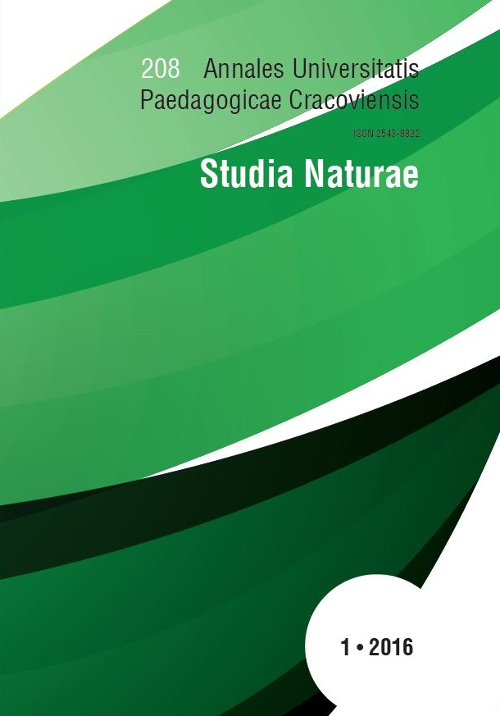Investigation of microelements contents in aerial parts of Agrimonia eupatoria L., collected in Lviv region (Ukraine)
Keywords:
ААС/ЕА (atomic absorption spectroscopy with electrothermal atomization), Agrimonia eupatoria, microelements, renoprotective, selenium, trace elementsAbstract
The genus Agrimonia L. of the family Rosaceae Juss. is known to include valuable medicinal plants. Agrimony is well known for its beneficial effects in various diseases such as liver complaints, gall-bladder stones; diarrhea, edemas and kidney ailments. The contents of microelements in aerial parts of Agrimonia eupatoria, an official herbal drug, collected from wild samples in the suburb of Lviv city, Western Ukraine, have been determined by atomic absorption spectroscopy with electrothermal atomization (ААС/ЕА) on VARIAN AA 240Z after mineralization in the microwave Milestone Start D. The found quantities of trace elements in the analyzed samples were as follows: manganese - 46.9 µg/g, copper - 7.9 µg/g, selenium - 0.16 µg/g, lead - 0.15 µg/g, cadmium - 0.05 µg/g. The received research outcomes were compared with results of other known scientific investigations of the medicinal plant material. The determined amounts of lead and cadmium in the investigated samples of the herbal drug complied with the World Health Organization (WHO) requirements. The special attention is paid for pharmacological effects, related to its renal impact, contents of selenium and phenolic compounds that allows considering the herbal drug as a promising nephroprotective agent.
Downloads
Metrics
References
Antal, D.S., Canciu, C.M., Dehelean, C.A., Anke, M. (2010). How much selenium do medicinal plants contain? Results of a research on wild-growing species from Western Romania. Analele Universităţii din Oradea – Fascicula Biologie, 17(1), 23–28.
Barnes, J., Anderson, L.A., Phillipson, J.D. (2007). Herbal Medicines. 3rd ed. London: Pharmaceutical Press.
Bukovsky, M., Blanarik, P. (1994). Immunomodulative effects of ethanolic aqueous extracts of Herba Agrimoniae, Flos Chamomillae and Flos Calendulae cum calyce. Farmaceutiky Obzor, 63, 149–156.
Ceballos-Picot, I., Witko-Sarsat, V., Merad-Boudia, M., Nguyen, A.T., Thévenin, M., Jaudon, M.C., Zingraff, J., Verger, C., Jungers, P., Descamps-Latscha, B. (1996). Glutathione antioxidant system as a marker of oxidative stress in chronic renal failure. Free Radical Biology and Medicine, 21(6), 845–853. https://doi.org/10.1016/0891-5849(96)00233-X
Chan, K. (2003). Some aspects of toxic contaminants in herbal medicines. Chemosphere, 52, 1361–1371. https://doi.org/10.1016/S0045-6535(03)00471-5
Ebadi, M.S. (2007). Pharmacodynamic basis of herbal medicine. 2nd ed. Grand Forks, North Dakota: CRC Press Taylor & Francis Group.
European Pharmacopoeia 8.0, (2013). Strasbourg: Council of Europe, European Directorate for the Quality of Medicines.
Gałuszka, A., Krzciuk, K., Migaszewski, Z.M. (2015). A new two-step screening method for prospecting of trace element accumulating plants. International Journal of Environmental Science and Technology, 12, 3071–3078. https://doi.org/10.1007/s13762-014-0719-4
Giachetti, D., Taddei, E., Taddei, I. (1986). Ricerche sull'attivita diuretica ed uricosurica di Agrimonia eupatoria. Bollettino della Societa italiana di biologia sperimentale, 62, 705–711. [In Italian]
Granica, S., Kluge, H., Horn, G., Matkowski, A., Kiss, A.K. (2015). The phytochemical investigation of Agrimonia eupatoria L. and Agrimonia procera Wallr. as valid sources of Agrimoniae herba – The pharmacopoeial plant material. Journal of Pharmaceutical and Biomedical Analysis, 114, 272–279. https://doi.org/10.1016/j.jpba.2015.05.027
Gray, A.M., Flatt, P.R. (1998). Actions of the traditional anti-diabetic plant, Agrimonia eupatoria (agrimony): effects on hyperglycaemia, cellular glucose metabolism and insulin secretion. British Journal of Nutrition, 80(1), 109–114. https://doi.org/10.1017/S0007114598001834
Gruenwald, J., Brendler, Th., Jaenicke, Ch. (2000). PDR for Herbal Medicines. Montvale, New Jork: Medical Economics Company.
Ivanova, D., Tasinov, O., Vankova, D., Kiselova-Kaneva, Y. (2011). Antioxidative potential of Agrimonia eupatoria L. Science and Technologies. Medicine, 1(1), 20–24.
Kosalec, I., Cvek, J., Tomić, S. (2009). Contaminants of Medicinal Herbs and Herbal Products. Archives of Industrial Hygiene and Toxicology, 60, 485–501. https://doi.org/10.2478/10004-1254-60-2009-2005
Kuo, K., Tarng, D. (2010). Oxidative stress in chronic kidney disease. Adaptive Medicine, 2 (2), 87–94. https://doi.org/10.4247/AM.2010.ABA010
Kurkina, A.V., Avdeeva, E.V., Kurkin, V.A. (2013). The Actual Aspects of Standardization of Some Pharmacopoeial Plants Containing Flavonoids. 10th International Symposium on the Chemistry of Natural Compounds, November 13-21, Tashkent-Bukhara. Abstracts.
Lee, K.Y., Hwang, L., Jeong, E.J., Kim, S.H., Kim, Y.C., Sung, S.H. (2010). Effect of neuroprotective flavonoids of Agrimonia eupatoria on glutamate-induced oxidative injury to HT22 hippocampal cells. Bioscience, Biotechnology, and Biochemistry, 74(8), 1704–1706. https://doi.org/10.1271/bbb.100200
Mamatkhanova, M.A., Khalilov, R.M., Syrov, V.N., Mamatkhanov, A.U., Kotenko, L.D., Satimov, G.B., Madrakhimov, Sh.N. (2009). Technology for cinaroside production from the aerial part of Ferula varia and evaluation of its hypoazotemic activity. Pharmaceutical Chemistry Journal, 43(3), 160–162. https://doi.org/10.1007/s11094-009-0262-7
Petkov, V. (1986). Bulgarian traditional medicine: A source of ideas for phytopharmacological investigations. Journal of Ethnopharmacoly, 15, 121–132. https://doi.org/10.1016/0378-8741(86)90149-2
Shabana, M., Weglarz, Z., Geszprych, A., Mansour, R.M., El-Ansari, M.A. (2003). Phenolic constituents of agrimony (Agrimonia eupatoria L.) herb. Herba Polonica, 49(1–2), 24–28.
Swanston-Flatt, S.K., Day, C., Bailey, C.J., Flatt, P.R. (1990). Traditional plant treatments for diabetes in normal and streptozotocin diabetic rats. Diabetologia, 33, 462–464. https://doi.org/10.1007/BF00405106
Štroffeková, O., Jánošová, V., Sýkorová, M., Havránek, E. (2006). Determination of heavy metals in samples of different states by radionuclide X-ray fluorescence. Acta Facultatis Pharmaceuticae Universitatis Comenianae, 53, 268–274.
Štroffeková, O., Planková A., Jánošová, V., Sýkorová M., Havránek E. (2008). Determination of Fe, Zn, Pb, Cd and Se Content in Medical Plants by X-Ray Fluorescence Analysis and Galvanostatic Stripping Chronopotentiometric Analysis. Acta Facultatis Pharmaceuticae Universitatis Comeniae, 55, 219–229.
Quality Control Methods for Medicinal Plant Materials, (1998). Geneva: WHO Press.
WHO Guidelines for Assessing Quality of Herbal Medicines with Reference to Contaminants and Residues, (2007). Geneva: WHO Press.
Wichtl, M. (2004). Herbal Drugs and Phytopharmaceuticals: A Handbook for Practice on a Scientific Basis. 3rd ed. Stuttgart: Medpharm GmbH Scientific Publishers.

